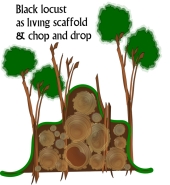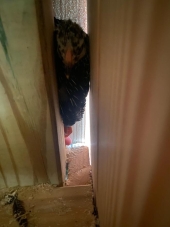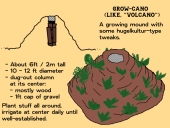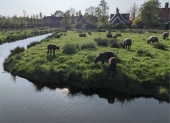




Bj Murrey wrote:
This "pattern" would drive me nuts. It's a hassle to get to the office at the center... nothing in nature works like this... it will take care to preserve this shape and layout...
I would only use this if I had a full time gardener and the office was some sort of local attraction people came to see...
I'd never use this at my home! Think about bringing a wheelbarrow to the center... PAIN IN THE....
Wasted walking, and once it's filled in with plants you can't see any spirals but from the air... and I can't fly.
Instead of these labor intensive designs, spirals, just use "comma" (like the punctuation) shapes... simpler, same principles, none of the obstacles or annoyance...
UNLESS of course you designing it all for the airplane passengers who might fly over and look someday


Thekla McDaniels wrote:How do we know what the manufacturing industry has decided is appropriate and food safe as opposed to what supports their economic considerations of ease in industrial processes? How is preseasoning different from all the other industrial nonstick coatings on so many modern pans? (teflon, silverstone etc)
Lodge's website wrote:There are no synthetic chemicals added. The oil is highly refined, and all proteins that cause soy-related allergies are eliminated. The oil is kosher and contains no animal fat, peanut oil, or paints.
Lodge is seasoned with 100% natural soybean oil. Some folks avoid soy due to an allergy or concerns around inflammation, but Lodge cookware is perfectly safe for these groups of people. That’s because the oil we use has been refined at very high temperatures to the point that the proteins that cause food allergies or inflammation are no longer detectable.
If you’d prefer not to use soy bean oil when cooking or seasoning at home, we simply recommend using an oil that has a high smoke point and fits your needs.





Richie Ring wrote: Each region will have something that will work better in their own region, but maybe we can discover a great idea that is as effective across multiple regions and can be cataloged here.